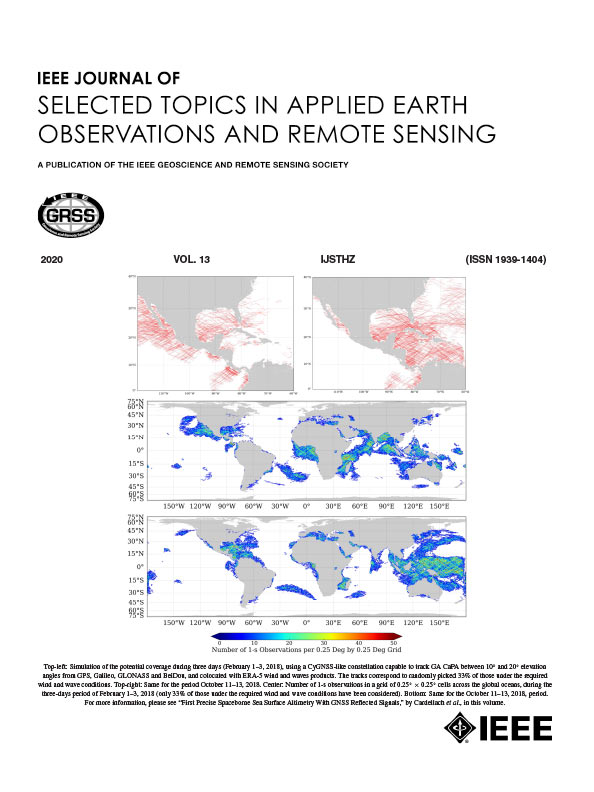DHLNet: A Dynamic Hierarchical Lightweight Network for Enhanced Ship Detection in Remote Sensing Images
IF 5.3
2区 地球科学
Q1 ENGINEERING, ELECTRICAL & ELECTRONIC
IEEE Journal of Selected Topics in Applied Earth Observations and Remote Sensing
Pub Date : 2025-08-22
DOI:10.1109/JSTARS.2025.3601579
引用次数: 0
Abstract
Ship detection in remote sensing images is essential for maritime surveillance and environmental monitoring. Traditional methods often struggle to accurately identify ships in complex scenes or when targets are small, and recent deep learning approaches, while promising, still face tradeoffs between detection accuracy, inference speed, and computational complexity. To overcome these limitations, we propose dynamic hybrid convolutional network (DHLNet), a novel detection model comprising three specialized modules. DHLNet includes a dynamic hybrid block module that adaptively selects convolutional kernels for multiscale feature extraction, a faster hierarchical attention fusion block that integrates local details with global context through a multilevel attention mechanism, and a lightweight quality estimation BN head that balances spatial, channel, and scale features for efficient decoding. These innovations collectively enhance feature representation and improve detection performance without significantly increasing the computational cost. Extensive experiments on a self-collected ship dataset and public benchmarks (DOTA-Ship and VisDrone2019) validate the effectiveness of DHLNet. The proposed model outperforms state-of-the-art detectors (e.g., YOLOv8, YOLO-KAN, Mamba) in both mAP50 and F1-score metrics. For example, on our dataset, DHLNet achieves an mAP50 of 91.4%, which is 2.7% higher than that of YOLO-KAN. These results demonstrate that DHLNet effectively handles complex backgrounds and small targets, offering significant improvements in detection accuracy and efficiency for remote sensing-based ship detection.DHLNet:一种用于增强遥感图像船舶检测的动态分层轻量级网络
遥感图像中的船舶检测对于海上监视和环境监测至关重要。传统方法通常难以在复杂场景或目标较小时准确识别船舶,而最近的深度学习方法虽然很有前途,但仍然面临检测精度、推理速度和计算复杂性之间的权衡。为了克服这些限制,我们提出了动态混合卷积网络(DHLNet),这是一种由三个专用模块组成的新型检测模型。DHLNet包括一个动态混合块模块,它可以自适应地选择卷积核进行多尺度特征提取,一个更快的分层注意融合块,通过多层注意机制将局部细节与全局上下文集成在一起,以及一个轻量级的质量估计BN头,它可以平衡空间、信道和尺度特征,以实现高效解码。这些创新共同增强了特征表示,提高了检测性能,而不会显著增加计算成本。在自行收集的船舶数据集和公共基准(DOTA-Ship和VisDrone2019)上进行的大量实验验证了DHLNet的有效性。所提出的模型在mAP50和f1得分指标上都优于最先进的探测器(例如,YOLOv8, YOLO-KAN, Mamba)。例如,在我们的数据集上,DHLNet实现了91.4%的mAP50,比YOLO-KAN高2.7%。结果表明,DHLNet能够有效处理复杂背景和小目标,显著提高了基于遥感的舰船探测精度和效率。
本文章由计算机程序翻译,如有差异,请以英文原文为准。
求助全文
约1分钟内获得全文
求助全文
来源期刊
CiteScore
9.30
自引率
10.90%
发文量
563
审稿时长
4.7 months
期刊介绍:
The IEEE Journal of Selected Topics in Applied Earth Observations and Remote Sensing addresses the growing field of applications in Earth observations and remote sensing, and also provides a venue for the rapidly expanding special issues that are being sponsored by the IEEE Geosciences and Remote Sensing Society. The journal draws upon the experience of the highly successful “IEEE Transactions on Geoscience and Remote Sensing” and provide a complementary medium for the wide range of topics in applied earth observations. The ‘Applications’ areas encompasses the societal benefit areas of the Global Earth Observations Systems of Systems (GEOSS) program. Through deliberations over two years, ministers from 50 countries agreed to identify nine areas where Earth observation could positively impact the quality of life and health of their respective countries. Some of these are areas not traditionally addressed in the IEEE context. These include biodiversity, health and climate. Yet it is the skill sets of IEEE members, in areas such as observations, communications, computers, signal processing, standards and ocean engineering, that form the technical underpinnings of GEOSS. Thus, the Journal attracts a broad range of interests that serves both present members in new ways and expands the IEEE visibility into new areas.

 求助内容:
求助内容: 应助结果提醒方式:
应助结果提醒方式:


